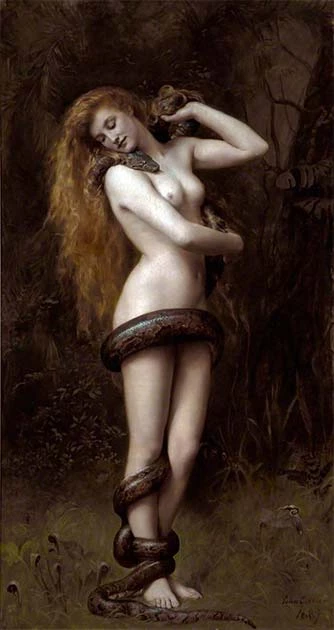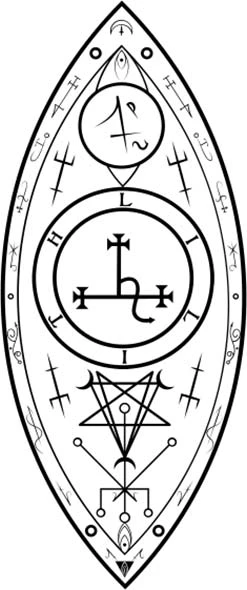When it comes to biblical lore there is one character so shrouded in mystery and controversy that scholars have spent centuries arguing whether she even counts as a real biblical character or not. Lilith, the woman who is said by some to have preceded Eve as Adam’s spouse may not be a name familiar to all. But her presence in ancient texts and folklore has left an indelible mark on discussions surrounding the Garden of Eden, creation, and the early days of humanity.
So, who is Lilith, where did she come from and what role did she play in the original creation narrative? This is the story of the woman who defied convention long before Eve stepped into the picture.
Who is Lilith?
The character of Lilith has long been cast into the shadows of history, but she remains a character of considerable fascination. In some interpretations of ancient Hebrew texts, she is portrayed as the first woman, created on equal footing with Adam from the same earthly clay.
This would make her the opposite of Eve, whom God fashioned from Adam’s rib who was created to be submissive, and whose passiveness led to her being tricked by the serpent. Unlike Eve, in most portrayals, Lilith exudes an aura of independence and self-determination.
The name Lilith itself is derived from the Hebrew word “lilitu”, which signifies a creature of the night, a nocturnal being. This connection with darkness and the unknown has added to Lilith’s mystique over the years. This association with darkness, combined with her strong-willed and assertive personality (refusing to comply with Adam’s authority in the Garden of Eden) has led some scholars to lend negative connotations to Lilith over the years.

Not much concrete is really known about Lilith as details of her character vary across texts and traditions. However, one thing tends to remain consistent, her defiance and refusal to conform to the traditional role of a subservient wife.
Lilith and the Garden of Eden
If you were to read any modern Bible you’d find no reference to Lilith, either in Genesis or anywhere else. Lilith’s presence in the Garden of Eden story is not part of the mainstream biblical narrative but largely emerges from Jewish folklore and texts. In these alternative accounts, Lilith is often depicted as Adam’s first wife before Eve.
As we’ve already covered, Lilith’s character is usually defined by her refusal to bow down to Adam and her lack of subservience as a wife. These might be traits many of us admire today, but not so 2,000+ years ago.
According to some versions of the story, Lilith’s defiance led to her expulsion from Eden, while in others she left willingly. In these versions of the tale, rather than surrender her independence she chose to be cast out of paradise.
Lilith’s origins can be traced back to a patchwork of mythologies and ancient texts, primarily within Jewish folklore. While not found in the canonical Hebrew Bible, her story began to take shape in various texts, including the “Alphabet of Ben Sira” and the “Zohar,” both of which were written in different periods of Jewish history.
In the “Alphabet of Ben Sira” Lilith is introduced as Adam’s first wife, created from the same earth as him. However, their marriage is fraught with conflict due to Lilith’s unwillingness to be subservient to Adam. Her eventual departure from the Garden of Eden marks the start of her journey as a figure of independence and defiance.
The “Zohar,” a significant work of Jewish mysticism, further developed Lilith’s character, portraying her as a powerful and enigmatic being associated with the dark and mysterious aspects of existence. Medieval scholars and storytellers often used the Zohar to paint Lilith as a kind of demon.
Beyond Jewish folklore, Lilith’s influence extended to Mesopotamian and Babylonian mythologies, where she was associated with demons and malevolent spirits. These varied mythological threads wove together to create the multifaceted character of Lilith.
Lilith’s mythos has also left a mark on popular culture, from literature to art and even modern feminist interpretations. Her story continues to resonate, serving as a symbol of rebellion against traditional gender roles and societal expectations.
What Happened to Her?
The fate of Lilith after her departure from the Garden of Eden is a subject of ongoing debate and interpretation in various mythological and folkloric traditions.
- Why was the Infancy Gospel of Thomas Excluded from the Bible?
- Sad and Strange: Medea, Vengeful Princess of Greek Mythology
In some accounts, Lilith is depicted as a wandering spirit, forever seeking her own path outside the confines of Eden. She is often associated with being a seductress or a malevolent force, appearing in the night to harm or tempt men.
The 13th-century writings of Isaac ben Jacob ha-Cohen (a Talmudist and Hebrew legal scholar) had Lilith coupling with the archangel Samael, the accuser, adversary, and destroyer of Talmudic and post-Talmudic biblical lore. This darker portrayal of Lilith as a demoness reflects her defiance against traditional gender roles and societal norms. Some medieval scholars used Jacob’s writings to explain that the offspring of Lilith and Samael were the demons and monsters that so many worshippers feared.

Conversely, other interpretations paint a more sympathetic picture of Lilith. She is seen by some as a symbol of feminine independence and empowerment, choosing freedom over subservience. Some feminist interpretations even celebrate her as a figure who stood up for her rights and refused to be dominated by Adam.
Lilith’s legend also intersects with various cultural beliefs. In some traditions, she is associated with childbirth, believed to be a protector of pregnant women and newborns. This positive aspect of her character contrasts with the more sinister depictions in other mythologies.
Early Feminism
In the realm of ancient myth and folklore, Lilith stands as a compelling and mysterious figure, challenging conventional narratives and sparking debates on gender, power, and autonomy. While not a part of the traditional biblical account of the Garden of Eden, Lilith’s story has endured through the ages, evolving to reflect changing cultural and societal values.
Lilith, as the woman who preceded Eve as Adam’s spouse, symbolizes independence and defiance. Her refusal to submit to Adam’s authority and her departure from Eden have made her a powerful emblem of feminine empowerment. However, her character is far from one-dimensional, with interpretations ranging from demoness to protector of women in childbirth.
Lilith’s mythos is a reminder of the enduring fascination with characters who challenge the status quo. Her story invites us to delve into the complexities of human relationships, power dynamics, and the enduring allure of the forbidden.
Top Image: Competing biblical traditions have Lilith either as some sort of demon, or as the first wife of Adam. Source: AltPix / Adobe Stock.